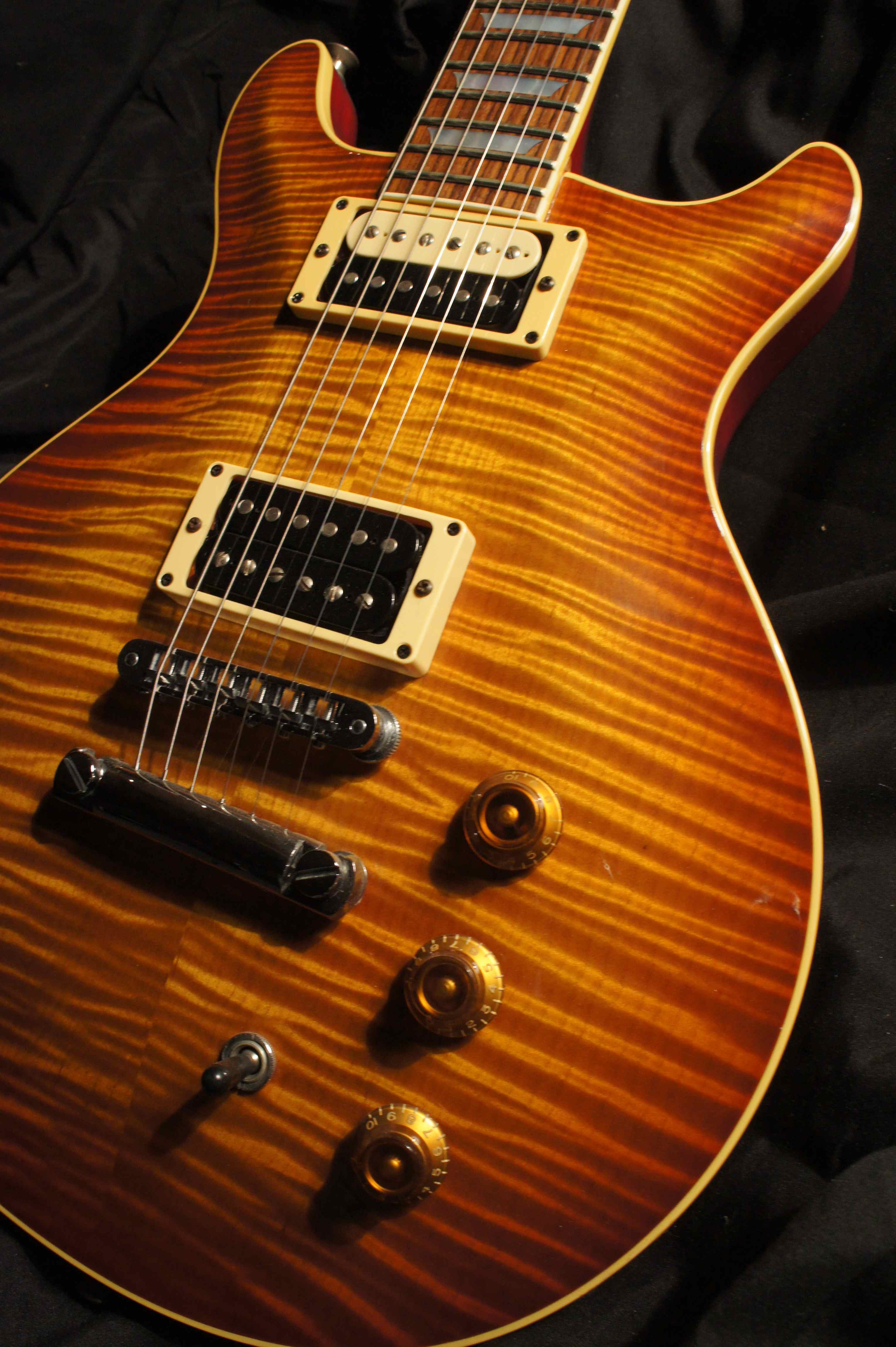
- #HAMER GUITAR SERIAL NUMBERS SERIAL NUMBERS#
- #HAMER GUITAR SERIAL NUMBERS SERIAL NUMBER#
- #HAMER GUITAR SERIAL NUMBERS PLUS#
- #HAMER GUITAR SERIAL NUMBERS SERIES#
They kept the same format, so the decade is determined by the style of neck plate.
#HAMER GUITAR SERIAL NUMBERS SERIAL NUMBER#
Semi-Hollow models (at this time) use a different format with no month, and the serial is found on the label inside the top f-hole.Įxample: 902703 = 2,703rd semi-hollow guitar made in 1990 Bolt-On Modelsīolt-neck models started having the serial number engraved into the neckplate in 1987. The "S" prefix also first appeared at this time.Įxample: 90080084 = 84th guitar made in August of 1990Īnother format found around this time (possibly only for international models):
#HAMER GUITAR SERIAL NUMBERS SERIAL NUMBERS#
Around this time, the serial numbers became a bit unpredictable, as they were figuring out a new system. The format for these dates is ( YY/MM/DD).Īnother neat way to know your Hondo was built prior to 1984, is that if it has the original Grover Rotomatic tuners, the posts that the buttons are screwed onto will be larger in diameter than Rotomatics made from 1984-on.Īs 1990 approached, the use of one digit for the year presented the issue of repeat serial numbers. If your guitar was built prior to 1984, or has lost its serial number sticker, the only other way to date your guitar is by looking for a date ink-stamped on the side of the original box switch. Being a sticker, many are ripped off or wear off over the years. These serial numbers are easily recognized as a white sticker with a black border, usually found on the back of the headstock or the heel of the neck.
#HAMER GUITAR SERIAL NUMBERS SERIES#
It is commonly found on Mastercaster Series models, among others. The significance of this format is unknown. Many guitars made around 1985 have a serial number with the format: In 1988, occasionally the format was YYMMPPPPP because of high production volume.Įxample: 880510504 = 10,504th guitar made in May of 1988 Samick first started using serial numbers on Hondos and other contract brands in 1984 (their home brand models did not use serials until ~1987), using the following format:Įxample: 8030768 = 768th guitar made in March of 1988 Green.Earliest known serial number, June 1984 (production number faded away). Sources for this article include The Ultimate: An Illustrated History of Hamer Guitars by Steve Matthes and Joe Moffett and Music Man: 1978 to 1982 (and then some)-The Other Side of the Story by Frank W.M.

The control panel features bright and deep switches along with reverb, tremolo, and master volume. Four 6L6 power tubes push 150 watts of power through two 12" speakers. The amp behind the Sunburst is an early ’80s Music Man 212HD-150. This ’78 Hamer features a string-through-body “sustain block” bridge. The current value for one in excellent all-original condition is $2,500.

#HAMER GUITAR SERIAL NUMBERS PLUS#
The original list price was $699.90 plus a $50 up-charge for crown inlays and fretboard binding. The 1978 Hamer Sunburst pictured here has features typical to that year, including a 6-saddle “sustain block” bridge (replacing earlier, thinner Mighty Mite versions) with strings going through the body in a method similar to a hardtail Fender Stratocaster, a one–piece mahogany neck (three-piece by mid-1979) with optional bound rosewood fretboard and crown inlays (dot inlays on an unbound fretboard were standard), a “snakehead” headstock (inspired by early Gibson mandolins), a solid mahogany body with a one-piece flame-maple veneer on top, and two specially wound DiMarzio PAF pickups. The Hamer Sunburst boasts a solid mahogany body with a one-piece flame-maple veneer top and two custom DiMarzio PAF pickups. (The Sunburst was eventually obtainable in other finishes.) To speed up production time, the guitar was only offered in cherry sunburst, hence the Sunburst model name.

The design was based on a double-cutaway Les Paul Junior, but with a pair of humbuckers and a flame maple veneer on top. The instrument would be easier to build, allowing more to be made and sold.

In 1977 Hamer and Dantzig decided they needed a more affordable model to appeal to working guitarists. Known as the Standard, the first Hamer 6-string was based on the shape of a ’50s Gibson Explorer.


 0 kommentar(er)
0 kommentar(er)
